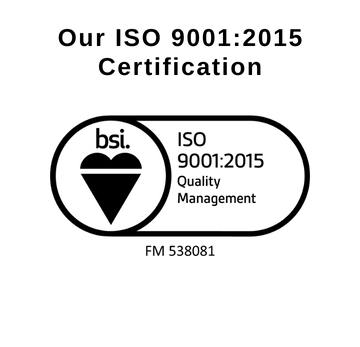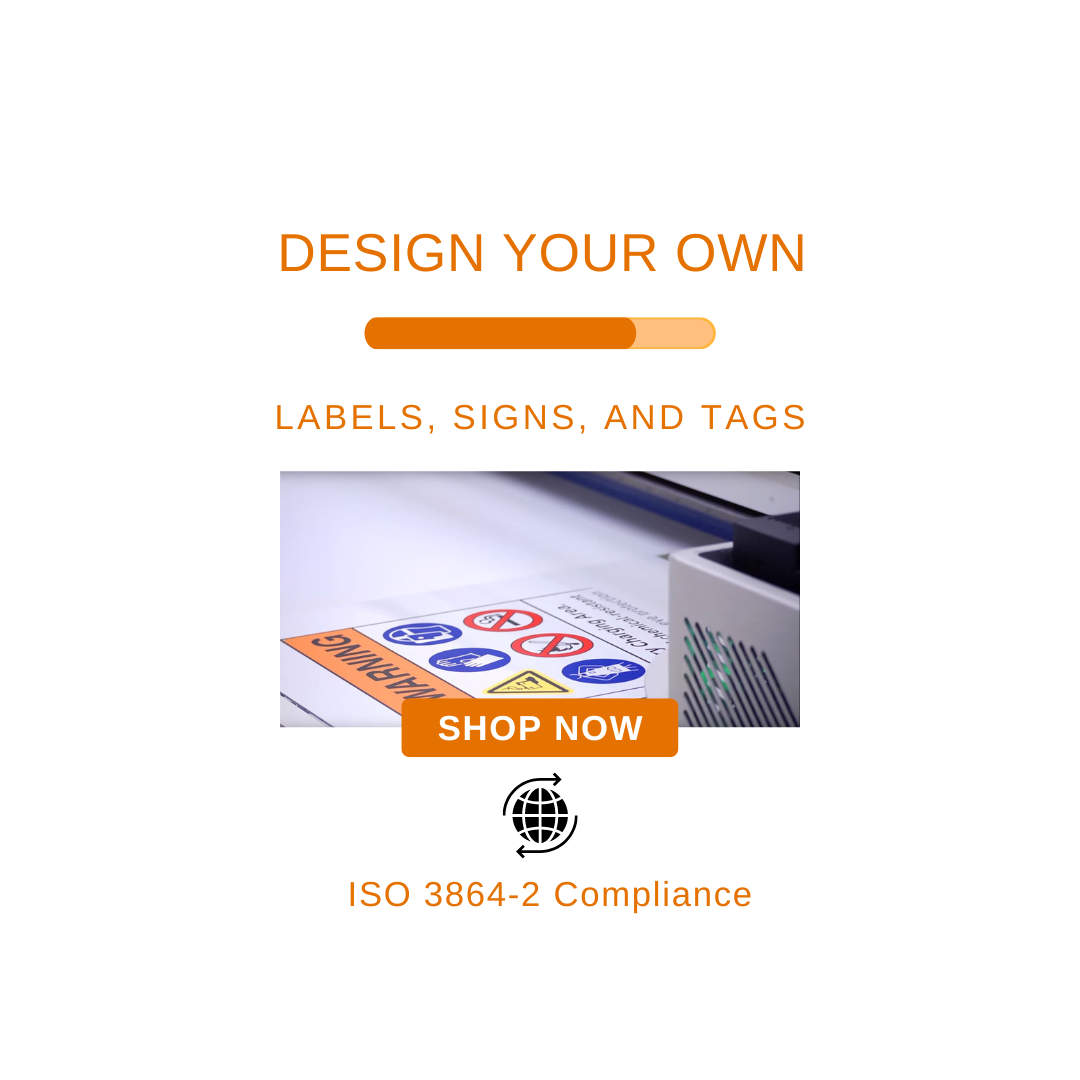
The Origin of the ISO 3864-2 Standard
ISO 3864 is a set of four standards that specifies international requirements for safety labels/signs and markings in workplaces and public spaces. ISO 3864-2 (Graphical symbols – Safety colours and safety signs – Part 2: Design principles for product safety labels) is a part of this group. It was created to establish additional principles to ISO 3864‑1 for the design of safety labels for products, including any items manufactured and offered for sale, including consumer products and industrial equipment. It’s intended to be used by all ISO technical committees and anyone designing product safety. The ISO 3864-2 standard is applicable to all products in industries where safety-related questions can be posed, although it’s important to note that it is not applicable to safety labels that are used:
- For chemicals (where GHS takes precedence)
- In the transport of dangerous substances and preparations
- In sectors subject to legal regulations which differ from certain provisions that are detailed within the standard’s documentation
Learn More About 2022 ISO 3864-2 Changes and How They Relate to ISO 7010
What Does ISO 3864-2 Include?
This sub-standard is intended to facilitate international standardization and help manufacturers adjust to statutory or regulatory requirements. As it’s also intended as a supplemental piece for ISO 3864-1, it covers layouts for labels that can be used in the installation, operation, use, maintenance, and disposal of a product. An extension of this standard is ISO 7010, a collection document or library of standardized safety symbols, including those for product safety labels. This includes the decision making process of what should be included in a label, like:
- The use of ISO 7010 symbols, and if they are individual or together
- What supplementary information should be provided in text on the label
- What supplementary information should be provided outside of the label (ex. manuals, training guides, etc.)
- Whether or not to use a hazard severity panel
- Supplementary symbols to use outside of the ISO 7010 scope
- If borders should be used to separate content on the label
How to Comply with ISO 3864-2
Outlined below are some of the categories that the ISO 3864-2 standard covers in depth – and refines in its latest publication – in order to help you determine what should be included in a product’s label:
- Hazard Analysis and Risk Assessment: A thorough analysis of the severity of risk, determination of the obvious nature of it, the potential hazards associated with the risk, and who will be interacting with the product should all be considered before a label is developed and affixed to a product.
- Determination of the Target Audience: After conducting a risk and hazard analysis, it’s important to determine who will be interacting with the future labels on the product. This means that a manufacturer will need to take into account additional training that may be needed for symbol comprehension, the language spoken by the users, education level, and any visual impairments that may warrant tactile label materials.
- Comprehension Testing and Evaluation: After the audience is determined and a test label is created, it should be thoroughly tested and examined by potential product users and test groups that match the capabilities and understanding level of the future users.
- Determination of Multiple Use: Depending on where the product is being distributed across the globe this can determine if multiple labels and translations will need to be affixed on a product. A manufacturer should have a reasonable projection of what countries and primary standards will be followed, which should help decide the best approach.
- Size and Legibility: In relation to the product itself, there should be a testing portion of the development dedicated to determining a label’s size and legibility based on observation distances. This is detailed more in the ISO 3864-1 standard.
- Placement: This step of the process is included to make sure that the viewer of the label is alerted in an acceptable amount of time and that it is readily visible.
- Durability: Considering the color stability over time and adjusting for different environments are important to make sure that a label’s use is truly effective in warning. This is detailed more in ISO 17398 for specifics on testing durability.
- Replacement: When ordering labels for large quantities of products that are constantly experiencing wear and tear and are often in new production, affixing labels with reorder number inclusion on the label itself is important for consistency.
Recent Updates to ISO 3864-2
The ISO 3864-2 standard was most recently changed in 2016 and was reviewed and confirmed again in 2022 with no additional changes. During the 2016 republication process, there were two major changes to the ISO label formats, which were:
1. Major Change: The product safety label format that used a single safety symbol without an ISO-colored surround shape was removed from the standard. This was changed to state that non-ISO formatted symbols can still be used on product safety labels, but only if one or more ISO symbols are already present. This means that if a symbol does not have a surround shape included, then it would be considered a supplementary symbol, and not a safety one.
What This Means for You: In order to be compliant with ISO standards, you should make sure that none of your applicable product’s labels have only non-ISO supplementary symbols on them. You can switch them out to still include your supplementary symbols, as long as you make sure to include a symbol with a surround shape (safety symbol) alongside them.
2. Major Change: A new wordless format that conveys risk severity was added to the standard, known as a hazard severity panel. This is formatted with specific colors and ISO symbols, created in mind to eliminate the need for multiple translations and to take up less space.
What This Means for You: While there may not be immediate actions to take with this change, it exists to actually make the lives of manufacturers easier. If you’re conducting a labeling refresh on your international products or are developing a new product line, being able to use a wordless hazard severity panel can communicate several safety messages without the need for multiple labels, text, or translations.
Your Responsibility as a Manufacturer
Legally, when a standard is revised, your duty to warn in the U.S. obligates you to make sure your labels are still in compliance with the latest updated standard. Internationally, a number of compliance issues hinge on meeting current standards because many countries and regions use adherence to the latest standards as a measure of a manufacturer’s efforts to meet industry best practices. The job of defining the proper content of your product's safety labels is one that is never finished. Clarion Safety, as your safety label provider and product safety/liability expert, can help you navigate the best path forward. We’re fully informed on how the safety sign and labeling standards are changing and how they can be applied by today’s manufacturers, as well as which safety symbols are currently in the process of being registered by ISO.


